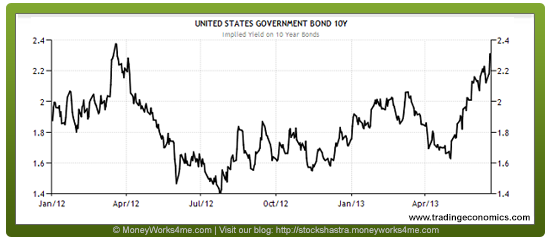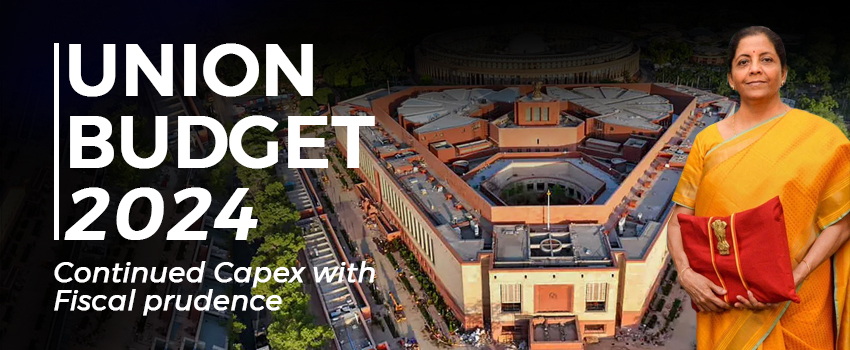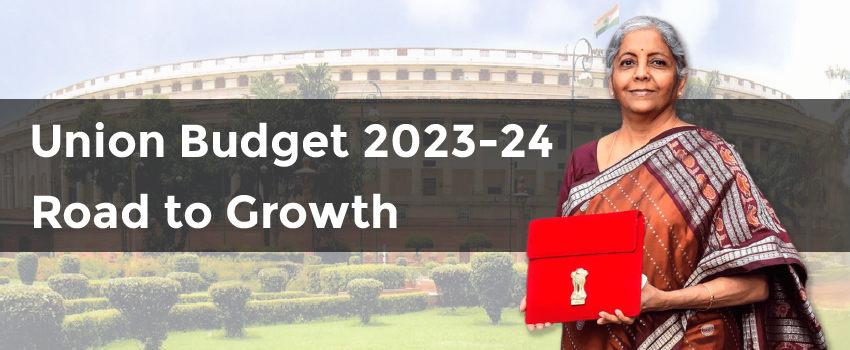June 19th, 2013 was a special day. Gold hit a three-year low, the Indian Rupee hit another all-time low against the dollar and the yield on the U.S. 10-years’ Treasury note jumped as high as 2.46%.
Well, is Fed’s statement to withdraw its quantitative easing programme by mid-2014 has got anything to do the way Sensex, Nifty and other Asian indices reacted? They should be! As the news about tapering of QE came out in open, equities all across the world started falling, with the Asian indices being hammered the most.
Is this kind of market reaction justified? After all, the news wasn’t a surprise; in fact quite anticipated by the market participants. Since the announcement made in May 2013, by Bernanke, the Indian stock market has shown high volatility. It crashed 383 points on 23rd May, 2013 with the earlier announcement and has further slid 5% since then. The main question is, ‘Is the market over reacting?’
It, probably, is.
What exactly did the Fed do?
Quantitative easing basically is an extraordinary money supply experiment used by central banks to stabilize the economy. According to Monetarist, during economic slowdown, central banks lower its interest rates, which would stimulate lending and economic activity in the economy as lower interest rates encourages people to spend rather than to save. However, in case of US Federal Reserve, when interest rates could not fall further, the central bank started buying bonds to inject money into the fragile economy that was at risk of seeing financial market contagion. Theoretically, the institutions selling these bonds have, thus, increased ‘funds’, which increased money supply providing push to the lending activities, thus, the economy is set in motion. In late 2008, when the financial crisis hit, FED started buying up Mortgage Backed Securities and later on even T-bills to stabilize financial markets and to provide liquidity to the market that had entered into a financial contagion. US Fed initially reduced the interest rates to the historical low level of 0.25%. When this step also did not prove sufficient, quantitative easing was used to increase liquidity, spur borrowing and kick start the economic activity in high gear. The current monetary policy termed as QE3 is the 3rd edition of this ‘bond shopping’ which the Federal Reserve has started with USD 85 billion worth of bonds being bought every month. This includes USD 40 Billion in Mortgage Backed Securities and USD 45 Billion in long term US Government securities.
What Mr. Bernanke wants to convey?
US Fed’s original target, while unleashing QE3, was to get the US unemployment rate down to 6.5% provided inflation expectations remain anchored below 2% rate. Now, provided Fed’s expectations are met by April 2014, it has signaled towards tapering of the bond purchases later this year.
While most economist expected this to happen sometime in between 2014 – 15 but with signs of US economic revival through employment figures and housing prices stats, there has been growing clamor within the FED policy hawks to start looking at tapering and eventually withdrawal of QE3.
Now, let’s have a look on how Indian economic climate will face the impact of tapering of quantitative easing;
High foreign debt – The end of stimulus is going to adversely affect the International high yield bond market. In near future, if not immediately, normalization of interest rates in US is expected. This would put all the companies who had raised low cost floating rate debt from the global markets to use the benefit of low interest rates prevailing in the global markets in jeopardy as they should see a significant rise in their interest cost. This would mainly include companies which have, in last 2-3 years, gone for major overseas acquisition via the debt route. Indian companies raised USD 11.16 billion worth of funds overseas in FY 12-13. These low rates do not seem to be attractive any more with the bond yields on rise amid news of ending of money easing policy by US.
Emerging Market (EM) currency depreciation – With the yields in US T-Bills, especially TIPS (Treasury Inflation protected strips) rising above 0%; for many FII’s who had been flirting with investing in emerging markets Govt. debt markets because of positive inflation, adjusted yields would now move back to investing in US bond markets. While in near term, this would make USD stronger and EM currencies weaker. However once the structural adjustments have been made, EM currencies would stabilize at a new higher level, and EM with strong macroeconomics, is likely to see large FII inflow back in to their Debt market.
This short term volatility in currencies would put pressure on the balance sheets of the companies with high USD denominated debts with no natural hedge. So, for example, because Reliance has large amount of USD denominated debt, it will not get hurt as its revenues and earnings are also in dollar terms. While Indian infrastructure companies like L&T can see their debt servicing cost increased because of higher cost in Rupee terms.
FII holdings and their debt investments – As treasury yields rise, the spread between US treasuries and Indian G-Secs have narrowed, thus, making the debt investments in India not much an attractive option for FII’s . Indian stock markets received huge amount of FII inflows in 2012, which are likely to suffer a setback in the short term, on account of falling Rupee and Fed’s policy. This means that the companies that have high FII investor interests are expected to suffer. The depreciating Rupee along with announcement of slowing down of the bond-buying by Fed may trigger FIIs to withdraw from investing in Indian markets. Over last month as Nifty fell by nearly 8%, an FII investor would have seen a total loss of about 13% (8% from fall in Nifty and another 5% from fall in Rupee against USD).
Banks to face the heat – Indian bonds may also experience rise in the yields as FII’s exit from Indian G-Secs (Since the start of month, the FII’s have sold net Rs. 21,000 Cr. in Debt Markets). As a result, the bond prices will go down. The banks investments in G-Secs that are accounted on the basis of Mark to Market accounting methods i.e. Available-For-Sale and Held-For-Trading Securities may see losses if Indian yields rise as a result of liquidity crunch and if RBI is forced to revers its interest rate policy stance because of continued Rupee slide.
The news is not all bad
In spite of all the negativity surrounding the market, it is not all that bad thing to happen to the Indian markets. The good news emerging from the US is that the US economy which was struggling since the financial crisis is now showing signs of recovery. The unemployment rate has come down to 7.6% from 9.1% in last 2 years and the GDP growth rate at 2.4%. This is likely to have trickle-down effect on the emerging market economies including India, as well.
However for Indian economy, to really make the most out of this situation, it needs to fix its own house in order.
- Sticky consumer inflation that has not been dealt with, by the Government supply side policies, as a result, once the growth picks up globally, Indian economy may start heating again.
- Slow clearances for investments.
- Core reforms like labor reform, land acquisition bill has not been taken up by the Govt. over successive parliamentary sessions.
- Government’s failure to handle existing subsidies has resulted in a very high Fiscal Deficit much beyond the target set by the Fiscal Responsibility and Budget Management Act of 2003. On the other hand, erecting new demons like NREGA and Food Security Bill without addressing the funding needs, have made these measures a pet schemes of the UPA.
- Over last many years, crucial tax reforms acts like double tax agreement (DTA) and goods and services tax (GST) have just been postponed due to various reasons. It’s important to get these reforms out, at the earliest.
In early 1990’s, a similar crisis on the Foreign Exchange front had forced the Government to takes some crucial steps for reforming the slowing Indian economy. Let’s hope the current crisis is used by the policy leaders to undertake crucial macro and micro reforms that can propel Indian growth for the next decade. Until then let us not be surprised with low GDP growth numbers, sticky inflation figures, volatile markets and Rupee depreciation. To know in detail, read here.
If you liked what you read and would like to put it in to practice Register at MoneyWorks4me.com. You will get amazing FREE features that will enable you to invest in Stocks and Mutual Funds the right way.
Need help on Investing? And more….Puchho Befikar
Kyunki yeh paise ka mamala hai
Start Chat | Request a Callback | Call 020 6725 8333 | WhatsApp 8055769463











Raghuram Rajan argues that INR devaluation pace is well behind the pace of inflation differential thereby implying that our exports are still competitive. The recent devaluation may help exports only to the extent there is less than full pass through of higher fuel costs.
Assuming that the Chinese stop their dumping that is…
1. Chinese dumping (if one can call that) or export (the term I prefer) are only likely to get more severe given the weakness in Global Economy as such and weakness in Chinese domestic economy that is facing credit crunch of epic proportions. So most chinese companies would be on the lookout for exports with aggressive sales strategy.
If Rupee devaluation is much less than as warranted by the inflation differential, I would think that our exports would actually become non competitive. Its very simple lets assume that I just directly export goods without making any value addition worth Rs 100 to US when USD/INR at Rs 50 (so for US$ 2) which has an inflation of 1% when India has a inflation of say 5%. Let say next year Rupee depreciates to USD/INR at Rs 51. But the cost of my good has gone to 105 so in order to get make just same sales at real level i should be selling it at 105 in India or in US at 105/51 = 2.06 USD. However given that inflation in US is about 1% US consumers (or producers) would expect price at US$ 2.02 and not USD 2.06. This difference makes my exports non-competitive.
An exporting nation would actually like to have it currency devalued beyond what the inflation differential warrants it. While an importing nation would like its currency to be overvalued beyond the inflation differential w.r.t to its trading partners.
The second part of your argument is much more complicated one. Let’s say in order to make India export efficient the govt. does not allow pass through of higher fuel cost to the Industry, the only beneficiary of this export policy would be the importing countries as their imports gets financed by us. Using subsidies like this to lead to short term export growth is a flawed long term strategy as its neither sustainable nor advisable. A better strategy would have been to allow full pass through of higher fuel prices that leads to short term high inflation which forces industry to move towards more productive use of asset.
This is where I love the policies that are taking shape right now in China, it will hurt Chinese growth in short term and would be painful for some economic entities esp shadow banking entities, some Iron ore and Steel trading companies, some large Banks but will help them to achieve a much more sustainable and balanced growth.
I hear that real unemployment rate in the US is much higher than reported. I heard that people who have stopped looking (they could not find jobs) for jobs are not counted as unemployed,
Can u please through some light on how the unemployment rate is calculated, and if there is any meat in my statement above.